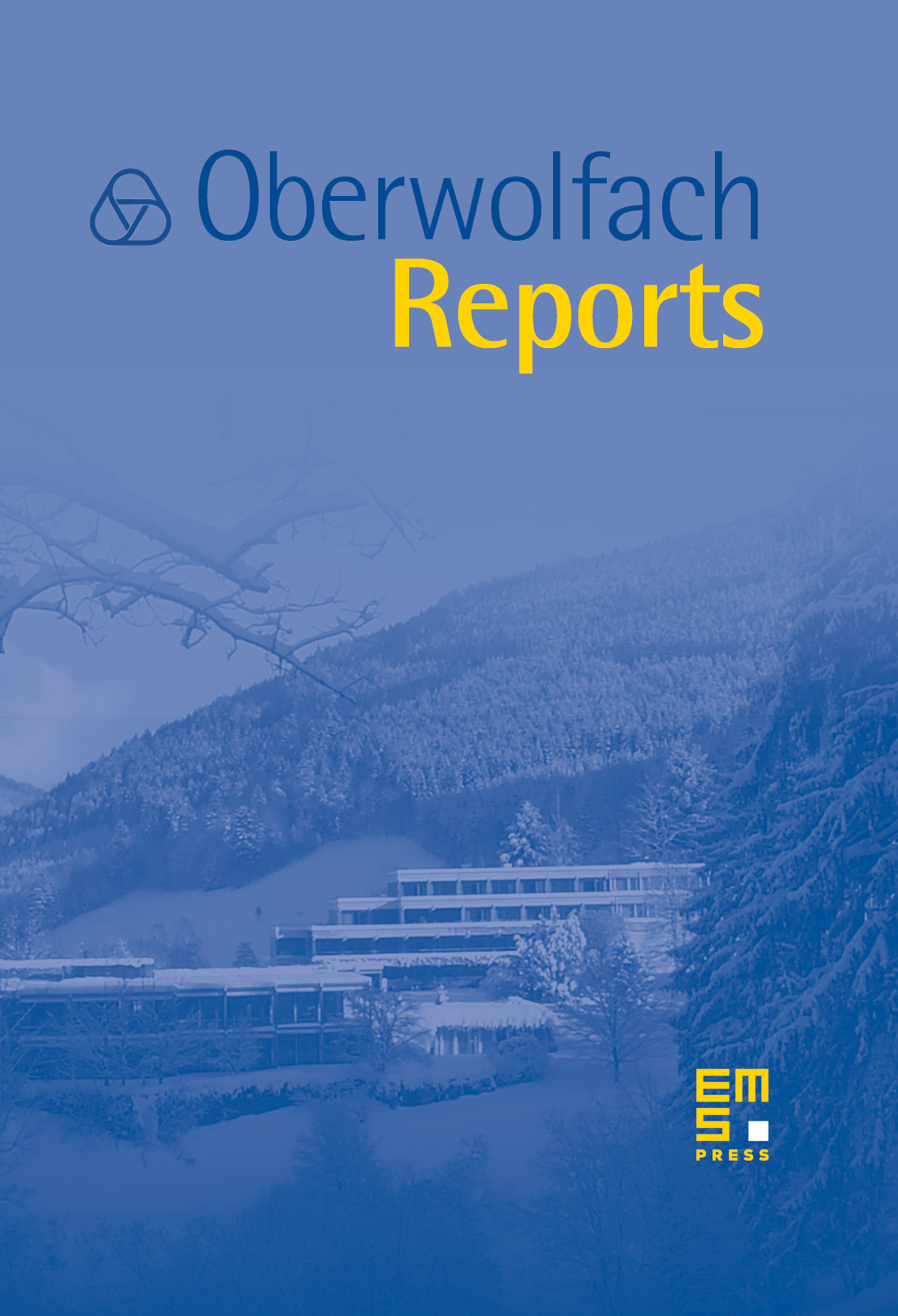Representation Theory of Finite-Dimensional Algebras
Idun Reiten
University of Trondheim, NorwayClaus Michael Ringel
Universität Bielefeld, Germany

Abstract
The workshop was well attended with about 50 participants from many continents. The core group was from the representation theory of algebras, with several experts from related areas.
The previous Oberwolfach meeting devoted to representations of finite-dimensional (associative) algebras took place in 2000. After discussions with the then director, we decided to shift the activities to other mathematical centers. We are grateful to the new director who convinced us that all parts of active mathematical research are again welcome at Oberwolfach.
The 2005 Oberwolfach meeting was preceded by a two days conference held at Bielefeld with the title Perspectives in Mathematics: Algebras and Representations. The lectures at Bielefeld provided outlines of new developments. They were given by J. F. Carlson (Athens), W. W. Crawley-Boevey (Leeds), S. Iyengar (Lincoln), J. C. Jantzen (Aarhus), M. Reineke (Münster), I. Reiten (Trondheim), R. Rouquier (Paris, New Haven), J. Schröer (Leeds), Jie Xiao (Beijing), A. Zelevinsky (Boston), and E. Zelmanov (San Diego). Since most of the Oberwolfach participants took part in the Bielefeld conference, it was possible to arrange the Oberwolfach schedule in a complementary way.
By now, the usefulness of methods and results from the representation theory of algebras is well-known. In particular, the notion of a quiver, its representations and the corresponding quiver varieties have become quite popular in many parts of mathematics. In this way, there have been a lot of interactions between the representation theory of algebras and other areas. A main focus of this meeting was to promote the interaction with such areas, and most of the talks dealt with topics of general interest.
One of the important connections with other areas is given by the Hall algebras and their connection with quantum groups. Recent developments in this area, partially inspired also by work of Drinfeld, were presented by Hubery and by Keller. The latter report was based on a recent construction of Toën.
The cluster algebras introduced by Fomin–Zelevinsky have had a lot of influence on various parts of algebra, including representation theory of algebras. Some recent investigations on quantum cluster algebras were presented by Zelevinsky, with challenging questions about further connections with finite dimensional algebras. The work on cluster algebras inspired work on what are called cluster categories and cluster tilted algebras, which gives some feedback on the theory of cluster algebras, in particular in the acyclic case. This was discussed in talks by Marsh and Buan. The cluster tilted algebras are of interest for several reasons: they provide a new class of algebras whose representation theory is controlled by a quadratic form, and they shed light on the tilted algebras themselves: any tilted algebra is the factor algebra of a corresponding cluster tilted algebra. Further relationship between cluster algebras and finite dimensional preprojective algebras was discussed by Geiß.
The cluster categories are Calabi–Yau categories of dimension (and related categories give arbitrary dimensions). They contain the stable categories of preprojective algebras of finite type, and such stable categories are Calabi–Yau of dimension for finite dimensional preprojective algebras in general. This has put an emphasis on the study of Calabi–Yau categories and their dimensions for categories related to finite dimensional algebras, in particular for stable categories of selfinjective algebras. Results of this nature were discussed by Erdmann. Iyama's higher analogue of almost split sequences in maximal -orthogonal subcategories is also related to this, and his talk dealt with complements in Calabi–Yau categories. There are interesting examples in commutative ring theory, as discussed by Yoshino. With many experts on areas where Calabi–Yau categories appear, an evening session was organized to provide a survey on Calabi–Yau phenomena, with contributions by Buchweitz, Geiß, Hille, Lenzing, Neeman and Van den Bergh. A wide range of topics was touched, for example mirror symmetry and reflexive polytopes, categories, elliptic curves. Three short abstracts concerning these evening lectures are included at the end of the report.
Derived and triangulated categories were also discussed from other points of view, in connection with coherent sheaves by Burban, infinitesimal deformations by Keller, thick subcategories by Krause, and with homotopy categories of projectives and of injectives by Iyengar. And we have to mention here the various aspects of Koszul duality. The corresponding Koszul algebras are a topic of central interest. Questions concerning Koszul algebras were discussed by Martínez-Villa, Martsinkovsky, Green, and Zacharia.
An important collection of problems in finite dimensional algebra theory are the homological conjectures, including the finitistic dimension conjecture, the (generalized) Nakayama conjecture and the Gorenstein symmetry conjecture. Some of these problems are of interest also in commutative algebra. A survey, along with new ideas for attacking the first conjecture, was given by Xi, and ideas for the Gorenstein symmetry conjecture by Beligiannis. A simple counterexample to a more general conjecture of Auslander was presented by Smalø. Here, a first example was given within commutative algebra. A related homological conjecture is the conjecture of Happel, that the eventual vanishing of Hochschild cohomology implies finite global dimension, where a counterexample was given in the talk by Green. Homological techniques in commutative algebra were discussed by Avramov.
Various aspects of quiver representations were dealt with in talks by Reineke and Buchweitz, and de la Peña discussed problems related to spectral radii. Applications of techniques and results for proving finite, tame or wild representation type were given by Schmidmeier and Farnsteiner.
The workshop presented a vivid picture of the present state of the art. And it provided a clear sight of the many still open problems, and on methods which may be helpful to attack them. We are sure that the interaction between the participants will lead to further progress in the coming years.
We thank Angela Holtmann (Bielefeld) for her careful preparation of this report.
Cite this article
Idun Reiten, Claus Michael Ringel, Representation Theory of Finite-Dimensional Algebras. Oberwolfach Rep. 2 (2005), no. 1, pp. 319–406
DOI 10.4171/OWR/2005/06